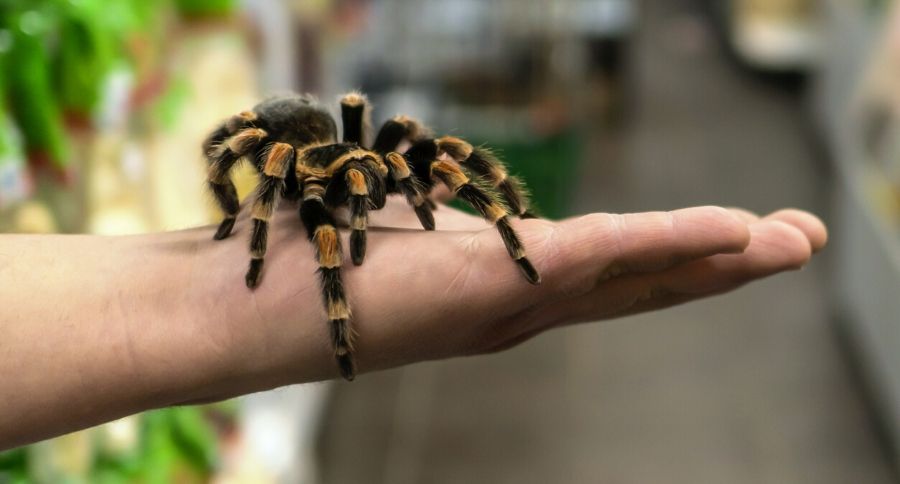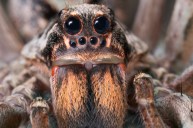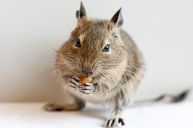Do tarantulas make good pets? We write about a lot of pets like geckos and macaws but a pet tarantula may be the 'scariest' pet we've researched and this is mainly because I'm scared of spiders!
These 'pets' are slow-moving and must be treated with care. One expert moves their spider with long forceps! You must be careful and cautious as these spiders have fangs that can cause mechanical damage to your hand.
An expert with Cornell Univerisity shares this story and after reading this 'hazard' I'm not sure you'll finish the article!
"When threatened, they rapidly scrape special hairs, called urticating hairs, from the back and sides of their abdomens into the eyes, nose, or lungs of their vertebrate predators. The hairs have a variety of shapes and are coated with irritating chemicals that cause itchy skin or irritated membranes. I have known of several people who have gotten the urticating hairs of tarantulas in their eyes and have needed surgery to have them removed."
Do you still want a pet tarantula?
Behavior and temperament (best pet for beginners)
https://www.instagram.com/p/B5vgwclI1X9/
The Spruce Pets tells beginners to get a female. They tend to have longer longevity than males.
"The ?pinktoe (Avicularia avicularia) is often cited as a good first arboreal tarantula but not a good first tarantula overall. In general, arboreal species are more challenging to care for, and the pinktoe is quite fast and agile, making handling more difficult."
Caring for your pet tarantula
Experts share that all tarantulas need a retreat in their cage to hide under. Adult spiders probably prefer to have more space in which to move.
"You can keep them happily in small cages to 10-gallon tanks — just make sure that it has a secure top on it! I generally cover most of the tops of cages with plastic wrap or tape because the spider can dry out too much with a totally open screened top to its cage. In all of my cages, I have soldered or drilled cork-sized holes so that I can put crickets in the cage without the need to OPEN the top of the cage. With many species, it is easy to 'hand-feed' crickets to the spiders through the holes without direct contact between you or your spider."
Again, direct contact with the spider is not recommended.
Possible hazards
https://www.instagram.com/p/B5eopELBTXL/
Cornell University highlights in one article the many hazards anyone considering a pet tarantula should be aware of before bringing this spider home. Check out what this expert has to say.
The species is active, aggressive, and fast.
"I would never even consider attempting to handle one - they have 3/4? fangs and a feisty nature! If I have to move my spiders to a new cage, I gently push them with long forceps, have capture cups nearby, and I am always cautious. Even calm species that are considered 'handleable' can get aggressive if they feel threatened."
Tarantulas only have venom glands in their chelicerae, as opposed to glands that extend into their cephalothorax.
"The bite of most species is described as being similar to a bee sting. The more important damage is likely to come from mechanical damage from a bite. Their fangs are easily strong enough to break the skin and penetrate some depth into your flesh!"
You can talk to pet stores about the tarantula species they sell or even go to a breeder. There are so many species of tarantula to consider but keeping tarantulas is for someone familiar with exotic pets! First-time exotic pet owners may want to consider something other than a pet spider.
You're not supposed to handle them! Experts and other tarantula owners will tell you they even have holes in the housing or terrarium to put food through so there isn't any contact with the spider.
From research, it sounds like tarantula bites are painful.
Remember there is molting too! YUCK.
Are you willing to take these risks? Good luck!
Do you live with a pet tarantula? What essentials did we miss? Please leave us a comment below!
WATCH NOW: Bearded Dragons Are Awesome Reptiles!




